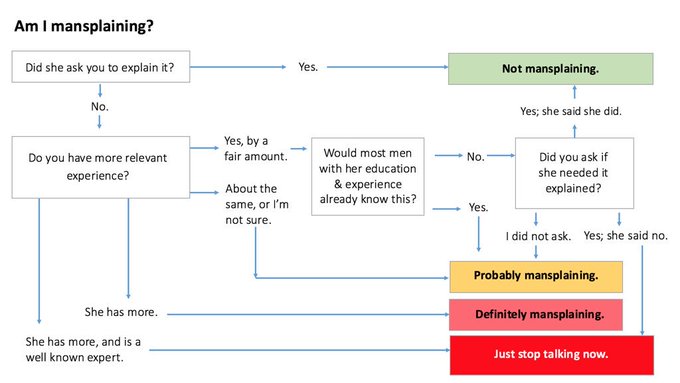Crossing the Gender Divide at the Holiday Table
Recognizing Mansplaining, Talk Overs, and Topic Shifters

Are you hosting or attending a holiday event? You and I know that getting together with people in person is even more precious these days, and that’s why we all want it to be a relaxed congenial event with time for catch-up conversations and discussions about life today.
It’s a perfect time to encourage people to share their experience navigating the pandemic, and whether they were simply surviving, coping successfully, or even thriving. Whether host or guest, you’ll appreciate the tone of the conversation if whatever your guests or you’ve contributed to conversations is heard and acknowledged.
Beyond the tensions in our country that can affect the tenor of today’s family reunions, you might just run into social phenomenon that are unique to the girls and women at the table — including mothers, sisters, daughters, aunts, and granddaughters. In the spirit of “just in case,” here are three problematic phenomena to prepare for:
First, mansplaining is the tendency of a man to assume a woman doesn’t know something and he needs to explain the content/situation to her. It can occur when a man explains something to a woman in a manner that suggests she can’t possibly know what she’s talking about, even if she’s knowledgeable and possibly an expert. And opinions are just that, but they can lead to debates.
Mansplaining can feel patronizing, condescending, demoralizing, or downright insulting if there appears to be no recognition of the woman’s grasp of the content or her right to have feelings about a situation. The topic of mansplaining in the workplace as well as in social situations is hot on the internet right now. For those visual thinkers, BBC Worklife and Kim Goodwin produced a chart to explain it to men in gaga goo goo terms that anyone can understand.
Second, there is mansplaining’s cousin, the talk over, the tendency for men to speak over a woman or cut her off before she can make her point.
Third, we shouldn’t ignore the topic-changer which happens when a man (usually) ignores what a woman just said and changes the topic, making her feel invisible. She wonders, “Did I just say something?”
Then there’s the interruptor. A 2014 George Washington University study found that when men spoke with women, they interrupted 33 percent more than they did when speaking with other men. You may recall watching the 2020 debates when Kamala Harris stopped Vice President Pence’s interruptions by saying, “Excuse me I’m speaking. I’m speaking.” I suspect that many women in business and professional life related to her predicament, wondering why even the smartest and most accomplished women can’t seem to finish a sentence before they’re interrupted.
Kristi Hedges, a contributor to Forbes Woman, suggests different ways to handle mansplaining, the topic changer, and the interruptor. You can use your outdoor voice, call the person out (as Kamala Harris did), redirect the topic, or make a joke about the situation. The best example was the late Governor Ann Richards’s ability to use humor to defuse awkward situations and take control when interrupted in a debate.
If you were in the middle of saying something, you deserve to finish your thought. And make no mistake, the young women at the table will be watching and learning how to take back control of a conversation, albeit it firmly but nicely. As the recipient of mansplaining, topic changing, the talk-over, and interruptions, you have three choices: You can ignore it, confront it, or use it as a “teachable moment.” Whatever you do, don’t rely on the wishbone to ensure that you’re seen and heard.
Lois Phillips, PhD is an author of the Women Seen and Heard Series and “The History of Women Speakers: When Women Spoke up They Changed History.” An earlier version of this essay was published on http://www.loisphillips.com/blog, 2021.



